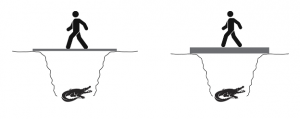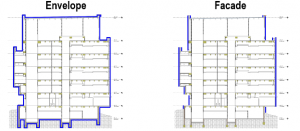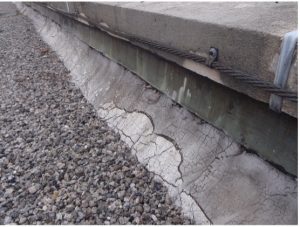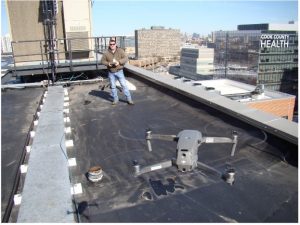There are currently 12 cities in the United States with ordinances that mandate periodic inspections of building façades, most of which are located in the Midwest. However, across the country, many building owners and managers elect to partake in voluntary façade inspections for both safety and long-term financial reasons.
Everyone can be involved in keeping a building in working order, including occupants, maintenance staff, managers, and owners. The best approach for keeping a building running is “if you see something, say something.”

Which bridge would you rather use? This is a classic example of structural design. Deeper members, such as on the right, are typically stiffer, stronger, and cheaper.

It’s a common misconception that the building envelope and building façade are synonymous. As you can see in the photo, the envelope accounts for all exterior aspects of all building, while the façade refers only to the vertical “faces” of the building.
Components of a building’s roof will age naturally. Sealants will break down due to age, UV exposure, and water. This can happen in just 6 to 8 years even if specified and installed properly.
STRUCTURAL inspection of your roof
 A roofing inspection starts below the roof itself. If you’re able to inspect your attic/plenum space, you can identify where water is entering the building. This assists in finding where leak locations are on the surface of the roof.
A roofing inspection starts below the roof itself. If you’re able to inspect your attic/plenum space, you can identify where water is entering the building. This assists in finding where leak locations are on the surface of the roof.
Roofing and flashing materials will age naturally due to age, UV exposure, and water. This can happen in just 6 to 8 years even if specified and installed properly. Staying on top of roof inspections will help prevent damage and save money in the long run.
“Ponding” is defined as water that has pooled on a surface for over 48 hours. It’s the most common factor in roofing and plaza slab failures, and is most commonly the result of improper drainage via sloping, gutters, and scuppers.
Drone Technology for Building Inspection
 Drone technology has become a great asset to building inspection techniques. Drones equipped with infrared cameras can quickly and efficiently document large areas of a building and capture the footage for later inspection.
Drone technology has become a great asset to building inspection techniques. Drones equipped with infrared cameras can quickly and efficiently document large areas of a building and capture the footage for later inspection.Thermal imaging is best utilized after sunset. Dry insulation cools off faster, so the areas that have been penetrated by water will remain brighter when viewed through an IR camera.
Utilize the IEI Advantage for structural Building Inspection and Façade Analysis
IEI’s expertise is trusted by owners and property managers of all sizes, including some of the nation’s largest property portfolios. In addition to answering requests for advice, consulting, and peer reviews, IEI is sought after for their expertise in the form of educational speaking events for national organizations as well as articles in major national publications.
Need a structural building inspection you can rely on? We use the highest standards to determine the safety of your building.
- Unsafe condition
- Requires repair/stabilization
- Ordinary maintenance
“Requires repair/stabilization” classifies a condition that could become an unsafe condition if not addressed prior to the next scheduled inspection.
“Ordinary maintenance” classifies a condition that should be addressed during the next scheduled maintenance.
IEI’s state-of-the-art techniques provide a very thorough condition assessment. The time to know the true extent of any deficiencies is now, not after the restoration contractor has started work – which would lead to change orders and damaged reputations. Contact us today!
